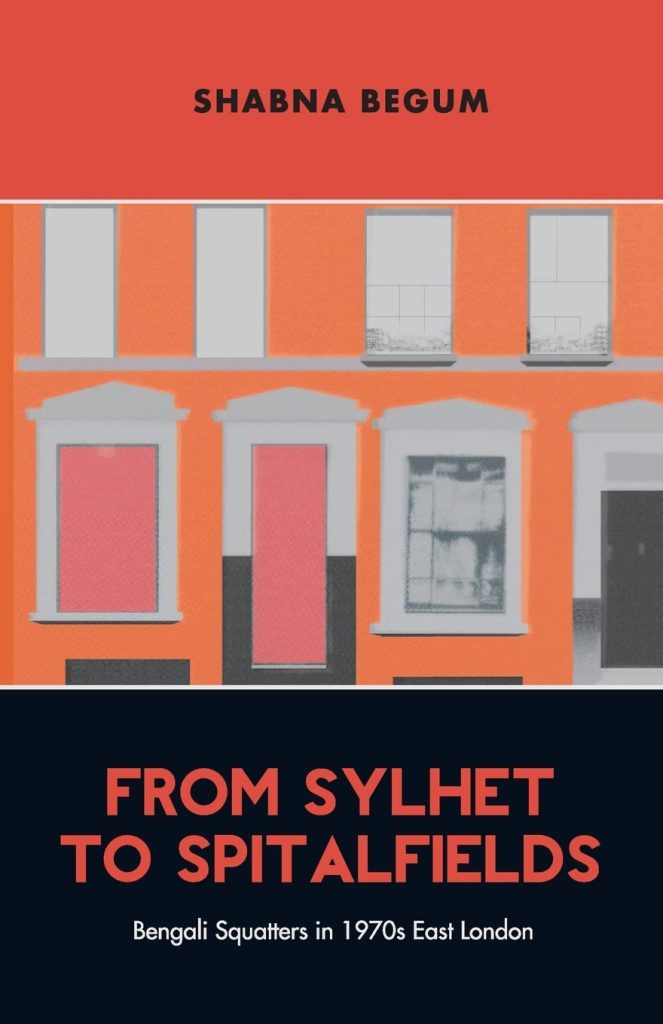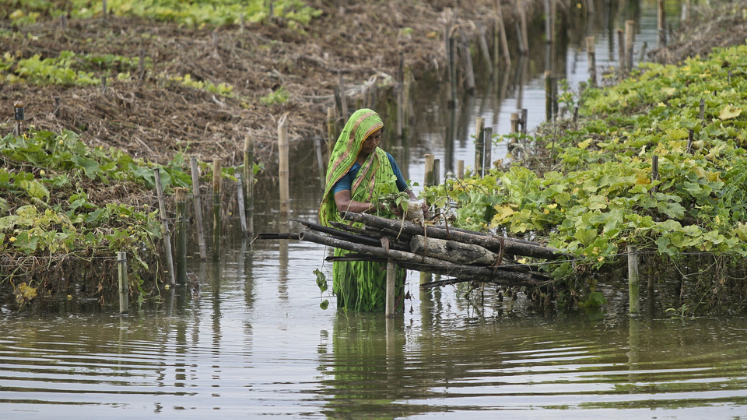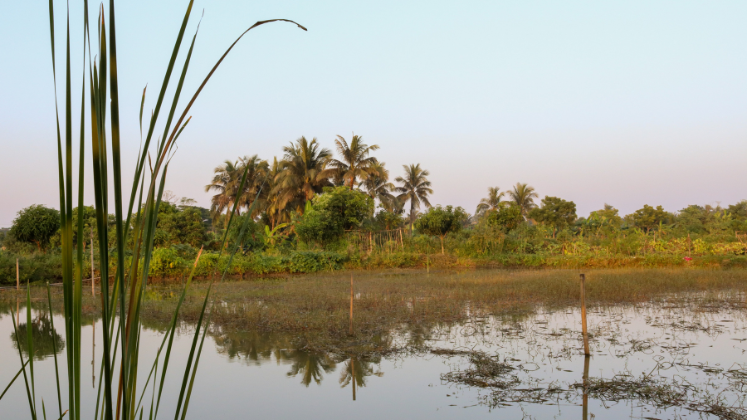In From Sylhet to Spitalfields, Shabna Begum examines the Bengali community’s struggle for housing and belonging in the face of systemic racism in 1970s East London. According to Md Naibur Rahman and Ruhun Wasata, Begum’s rich combination of ethnographic work and historical analysis reveals how, through squatting, activism and community organising, Bangladeshi migrants successfully demanded their right to housing.
 Someone with a rumbling stomach taking a stroll around Tower Hamlets in London, famous for its Bangladeshi community and cuisine, might be focused on finding a place to eat. Once satiated, attention can be focused on questions of how this diasporic community who were once colonised made it to the land of the coloniser and eventually called it home. In From Sylhet to Spitalfields, Shabna Begum undertakes an academic journey to examine the experiences of the Bangladeshi community as they faced systemic and targeted racism in their struggle to find literal and figurative homes in East London.
Someone with a rumbling stomach taking a stroll around Tower Hamlets in London, famous for its Bangladeshi community and cuisine, might be focused on finding a place to eat. Once satiated, attention can be focused on questions of how this diasporic community who were once colonised made it to the land of the coloniser and eventually called it home. In From Sylhet to Spitalfields, Shabna Begum undertakes an academic journey to examine the experiences of the Bangladeshi community as they faced systemic and targeted racism in their struggle to find literal and figurative homes in East London.
The book examines the Bangladeshi Squatter movement in the 1970s [. . .] to ensure the minimum basic rights of finding tenancy agreements in places that could keep them safe from targeted and street racism.
The book examines the Bangladeshi Squatter movement in the 1970s, a united effort against institutionalised racism of the Greater London Council (GLC) and Tower Hamlets Council (TLC) to ensure the minimum basic rights of finding tenancy agreements in places that could keep them safe from targeted and street racism. Begam’s robust ethnographic research both documents the suffering and struggles of the Bangladeshi community in London and records their resilience and resistance in the face of adversity.
The book begins with a historical account of the migration pattern of people from Sylhet, the North Eastern region of Bangladesh, to East London. Dating back to the boat building and sailing traditions of Sylheti people found in Ibn Battuta’s record in 1346 and Robert Lindsay’s observation in 1777, Sylheti men were initially employed as ship workers by the East India Company under British rule. Lindsay, the revenue collector deployed in Sylhet, extracted all trading opportunities for limestone, elephant trading (at least 6000), tea plantation and ship building. This typical practice of colonial-era property acquisition and exploitation of natural resources led him to purchase Balcarres House in Fife, Scotland from his older brother, Earl Alexander. This is a glaring example of how Sylhet and Sylheti seafarers contributed to the growth of the economic and political power of British colonisers in the 18th century.
The book observes this migratory pattern as part of the legacy of imperialism, epitomised in Sivanandan’s phrase, ‘We are here because you were there’.
The exploitation continued with an administrative strategy of annexing Sylhet to Assam, the neighbouring district, whose tea plantations became a cash cow. This layout and arrangement made Sylheti people owners of their land, unlike in other districts, which were governed by a few elite landlords and the majority of tenants. With the growing population, Sylheti people gravitated towards the merchant shipping industry to ease the pressure on the land-based economy. As part of an invitation to new commonwealth citizens in the post-war period Sylheti people started migrating from Bangladesh to East London in the 1960s and 1970s in search of opportunity, finding work in the garment, catering and hospitality sectors. The book observes this migratory pattern as part of the legacy of imperialism, epitomised in Sivanandan’s phrase, “We are here because you were there.”
The book stands out for highlighting the significance of the role of women in the squatter movement. In the mid-1970s, Sylheti men were concerned that, due to the racialist restriction on Commonwealth migration, they wouldn’t be able to bring their wives and children to the UK in the future as family reunification migrants, who would then morph into economic migrants. Their families were eventually allowed to join them, and their temporary, unstructured and compromised accommodation setups were no longer adequate. The lack of suitable accommodation led to Sylhetis wrangling with the GLC and THC powered with residency qualification and fifty-two weeks continuous residency policy for endorsing their discriminatory allocation. Eventually, the only option left was squatting. In these squats, women became the frontline defenders against discriminatory attacks since men were largely away at work outside the home. From protecting the home to protesting on the streets, Sylheti women played a key role in the movement, requiring resilience and defiance.
With no facilities for private bathing, broken windows and doors and interrupted utility supplies, the squatters adjusted to squalid living conditions.
Through the heart-wrenching lived experiences of its interviewees, the book evidences the poor conditions of the squats: dilapidated, leftover houses where no one else would agree to live. With no facilities for private bathing, broken windows and doors and interrupted utility supplies, the squatters adjusted to squalid living conditions. Beyond the this, squatters experienced smashed doors and windows, targeted racist harassment and elected politicians’ committing to expel the Bengali people from the area. In one rare instance where a Bengali family was allocated a council tenancy, the targeted violence they were subject to from the local community meant prevented them from moving in.
The formation of the Bengali Housing Action Group (BHAG) in the spring of 1976 paved a new way to coordinate the efforts and demands of squatters that were conveyed to the councils. The book highlights how this organisation not only established a game-changing platform but also emerged as a united force to resist violence. The formalised voice and force of the organisation proved crucial in gaining support, respect and acceptance from different groups.
The book presents a thorough account of BHAG activities which led to broader amnesty for squatters, enabling them to register and receive GLC tenancy in June 1978. From desperate attempts of squatting to 3000-strong demonstrations of Bangladeshis to finally being able to meet with GLC Councillors, the BHAG representation gave momentum and organisational force to the movements. In 1977, it was agreed by the GLC that their request to be housed in the E1 area would be honoured. BHAG activists made it clear that white or mixed-race people were also welcome as long as the majority of Bangladeshi people are housed in the same area.
The friendship, love and sacrifice of non-Bangladeshi BHAG activists like Terry Fitzpatrick, Mala Sen and Farrukh Dhondy demonstrated the power of multiculturalism and solidarity that London enables.
The Squatter movement and formulation of BHAG fomented lifelong friendships and connections that went beyond shared trauma and suffering. The friendship, love and sacrifice of non-Bangladeshi BHAG activists like Terry Fitzpatrick, Mala Sen and Farrukh Dhondy demonstrated the power of multiculturalism and solidarity that London enables. While some tried to protect Bangladeshis through their vigilante patrolling in Ford Zafire every night for a year, others voiced their frustrations, sufferings and demands on behalf of the Bangladeshi women. In addition, the support from the Socialist Worker Party, the Anti-Nazi League, and Race Today brought more attention and visibility. This movement worked as a foundation stone for many subsequent achievements in the housing cooperation, direct representations in councils and recognition of Bangladeshi culture. From forming housing cooperatives such as Shahjalal and Mitali Housing Co-Op to having representation with a Labour Councillor in 1985, the community established their presence in East London and beyond. British Bangladeshis’ continued political awareness and engagement led to the election of their first Member of Parliament (MP) in 2010, followed by three others in 2010, 2015 and 2019, respectively. The overall emergence of Bangladeshi community in almost every sector has often been credited to their commitment to education, which resonated through many interviewees’ responses – “because we put a graduate in every family”.
The book takes the reader on both an academic and an emotional journey, balancing robust historical research with human stories of resilience in the face of adversity.
Begum’s book does a commendable job of weaving the impacts of political events in Bangladesh with the nature of protests in East London. Bangladesh’s war of independence in 1971, the famine of 1974, and the assassination of the Founding Fathers of the Nation sedimented the resilience, resistance and courage, demonstrated by Bangladeshis who stood for their rights in Spitalfields, East London. Although many Sylheti people moved to Britain with the full intention of returning to Bangladesh, the struggles and achievements in East London gave them a sense of double belonging. The book effectively employs an oral ethnographic approach, making it a significant historical record of the Bangladeshi community in East London. The book takes the reader on both an academic and an emotional journey, balancing robust historical research with human stories of resilience in the face of adversity. From historians and geographers to anthropologists, sociologists to gender studies specialists, this book will appeal to many as a means to better understand the experiences of immigrants in Britain.
Note: This review gives the views of the author, and not the position of the LSE Review of Books blog, or of the London School of Economics and Political Science.
Image credit: Olivier Guiberteau on Shutterstock.







